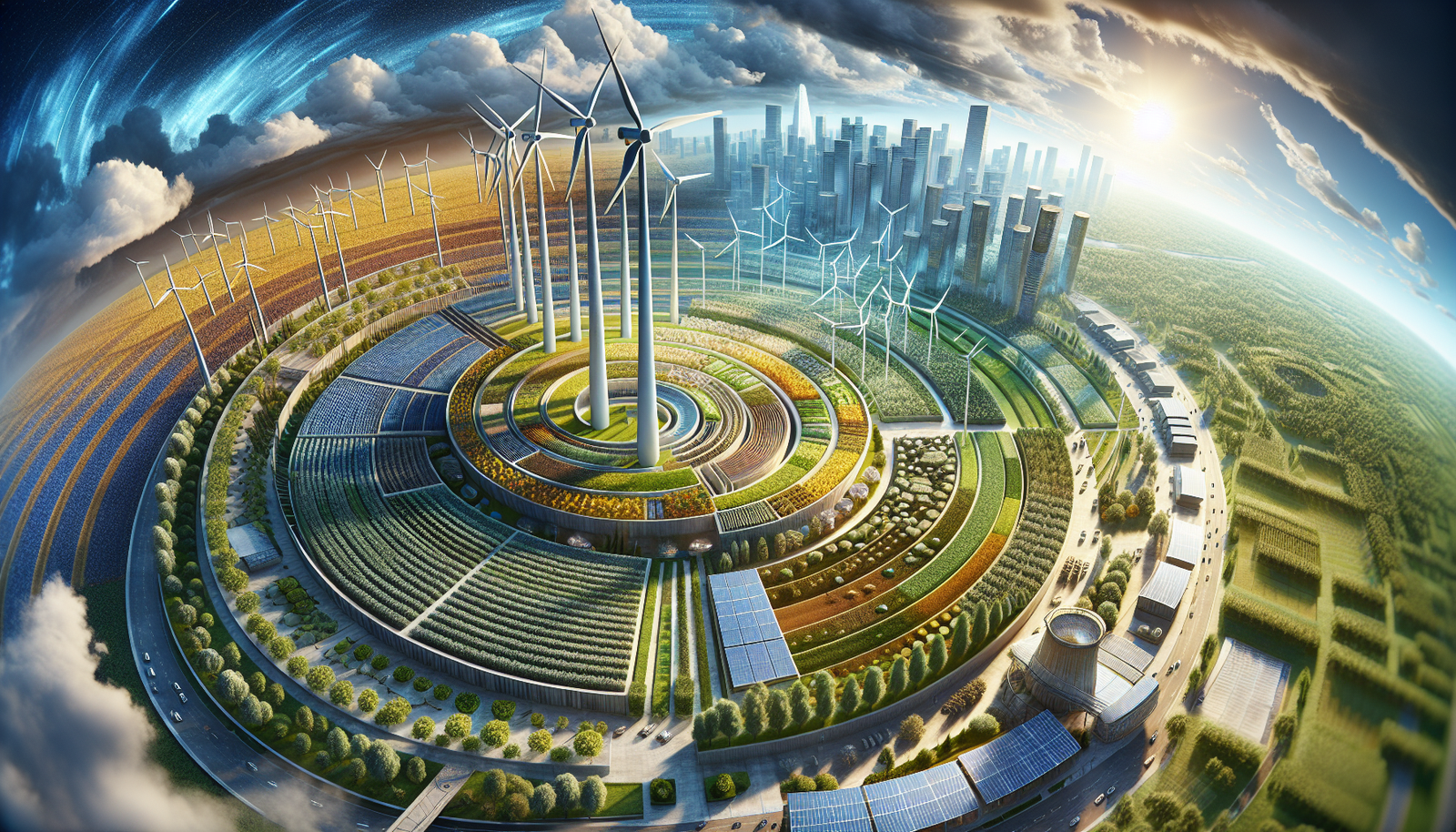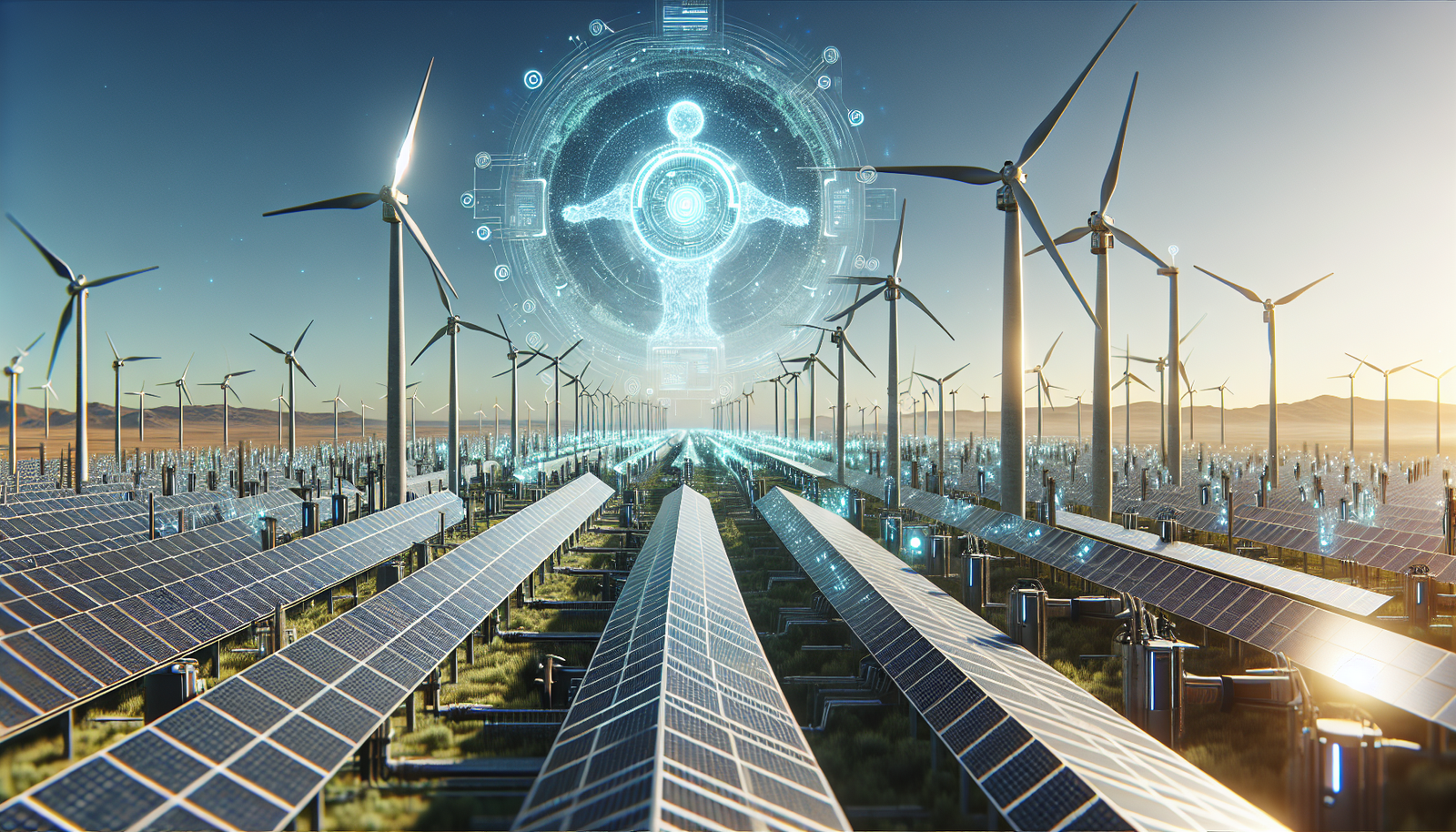Understanding Sustainability
Sustainability is a comprehensive concept that refers to the ability to maintain ecological and social systems over the long term. It is built on three main pillars: environmental, economic, and social sustainability. These pillars are often referred to as the three Ps: People, Planet, and Profit. A sustainable approach seeks to balance these three aspects to ensure that future generations can meet their needs without compromising current resources.
One of the fundamental aspects of understanding sustainability is recognizing the interconnectedness of natural and human systems. As human activities increasingly impact the environment, it is crucial to adopt practices that promote the health of our ecosystems. This involves a shift towards renewable energy sources, such as solar and wind power, and reducing reliance on fossil fuels. Additionally, sustainable agriculture practices aim to minimize environmental impact while maintaining crop yields and supporting the livelihoods of farmers.
Data visualization plays a significant role in understanding and promoting sustainability. The table below highlights some key statistics related to sustainability efforts worldwide:
| Area | Statistics |
|---|---|
| Renewable Energy | In 2020, renewable energy accounted for 29% of global electricity generation, a significant increase from 2010, when it was only 20%. |
| Water Conservation | Efforts in water conservation have led to a 15% reduction in water usage in agriculture globally over the past decade. |
| Urban Development | Approximately 54% of the global population now lives in urban areas, emphasizing the need for sustainable urban planning. |
To truly achieve sustainability, it is essential to incorporate technology, corporate responsibility, and effective policy-making. Technology can provide innovative solutions to environmental challenges, such as carbon capture and storage or precision agriculture. Companies must also take responsibility for their environmental impact by adopting sustainable practices and transparent reporting. Lastly, governments play a pivotal role in creating policies that incentivize sustainable development and penalize unsustainable practices. By understanding these aspects, societies can work towards a more sustainable future.
The Role of Renewable Energy
Renewable energy is at the forefront of the movement towards sustainability, serving as a crucial component in reducing carbon emissions and mitigating climate change. The transition from fossil fuels to renewable sources such as solar, wind, and hydroelectric power is essential for creating a sustainable future. Solar energy has seen significant advancements in recent years, with the cost of solar panels decreasing by over 80% since 2010. This reduction in cost has made solar power more accessible to a wider range of consumers, from individual households to large corporations.
Wind energy also plays a vital role in achieving sustainability. The installation of wind turbines has grown exponentially, with countries like the United States and China leading the charge in wind energy production. In 2020, wind energy accounted for approximately 8% of the United States’ total electricity generation. This growth is supported by innovations in turbine technology that have increased efficiency and energy output.
Hydroelectric power remains one of the most reliable sources of renewable energy, providing consistent and controllable energy output. However, it is crucial to balance the benefits of hydroelectric power with the environmental impact on aquatic ecosystems. Innovative approaches, such as the development of fish-friendly turbines, aim to minimize these impacts while maximizing energy production.
The integration of renewable energy into national grids is essential for maximizing its benefits. This requires substantial investment in infrastructure and technology, including the development of smart grids and energy storage solutions. Corporate responsibility and policy-making play a significant role in facilitating this transition, with incentives and regulations designed to encourage the adoption of renewable energy sources.
Sustainable Agriculture Practices
Sustainable agriculture is a crucial component in achieving a greener future, as it seeks to balance the need for food production with the preservation of environmental quality. By implementing sustainable practices, farmers can reduce their ecological footprint, enhance biodiversity, and improve soil health. The following paragraphs explore some key sustainable agriculture practices.
One of the most effective approaches is the adoption of crop rotation and diversity. This practice involves alternating the types of crops grown on a particular piece of land to improve soil fertility and disrupt pest cycles. Diverse crop systems can lead to higher resilience against climate change and reduce dependency on chemical inputs. Additionally, integrated pest management (IPM) is another vital practice that minimizes the use of harmful pesticides through biological pest control methods and careful monitoring.
Another critical aspect of sustainable agriculture is water conservation. Techniques such as drip irrigation and rainwater harvesting allow farmers to use water more efficiently, reducing waste and ensuring that crops receive adequate hydration even in areas prone to drought. The use of cover crops and mulching can also help in retaining soil moisture and minimizing erosion.
| Practice | Benefits |
|---|---|
| Crop Rotation | Improves soil health and reduces pests |
| Integrated Pest Management | Decreases chemical pesticide use |
| Drip Irrigation | Enhances water efficiency |
| Cover Cropping | Prevents erosion and improves soil structure |
Moreover, agroforestry integrates trees and shrubs into agricultural landscapes, offering benefits such as increased biodiversity, improved air and water quality, and carbon sequestration. By adopting these sustainable practices, farmers not only contribute to environmental sustainability but also potentially increase their profitability through improved crop yields and reduced input costs.
Water Conservation Strategies
Water conservation is a crucial component of achieving sustainability, as it ensures the availability of this vital resource for future generations. One effective strategy is the implementation of efficient irrigation systems in agriculture, which can significantly reduce water wastage. Systems such as drip irrigation and sprinkler systems target the root zones of plants, minimizing evaporation and runoff. Additionally, implementing rainwater harvesting techniques in both urban and rural settings can supplement traditional water sources and reduce the burden on municipal systems.
Another critical strategy involves the adoption of water-efficient appliances in households and industries. Technologies such as low-flow faucets, dual-flush toilets, and water-efficient washing machines can drastically decrease water consumption. Complementing these technologies, public awareness campaigns play a pivotal role in encouraging individuals and businesses to adopt water-saving habits. Behavioral changes, such as fixing leaks promptly and reducing shower time, can collectively lead to substantial water savings.
Policy-making also plays a significant role in water conservation. Governments can implement regulations that mandate the use of water-saving technologies and practices. Incentives, such as tax rebates for households and businesses that adopt water-efficient systems, can further promote conservation efforts. Moreover, policies that encourage the sustainable management of existing water resources, such as protecting wetlands and restoring natural water cycles, are essential for long-term sustainability.
| Water Conservation Strategy | Potential Water Savings (%) |
|---|---|
| Efficient Irrigation Systems | 30-50% |
| Water-Efficient Appliances | 20-40% |
| Rainwater Harvesting | 10-30% |
| Public Awareness Campaigns | 5-15% |
Sustainable Urban Development
Sustainable urban development is a critical component in the journey towards achieving a greener future. As urban areas continue to expand, it is essential to implement practices that minimize environmental impact while promoting economic and social well-being. Smart city planning and the integration of green technologies are at the forefront of this effort, ensuring that cities evolve in harmony with the environment.
One of the key elements of sustainable urban development is the use of renewable energy sources to power city infrastructures. This includes the deployment of solar panels, wind turbines, and geothermal systems. By reducing reliance on fossil fuels, cities can significantly cut down on their carbon emissions. An efficient public transportation system is another hallmark of sustainable urban development, as it reduces the number of vehicles on the road, leading to lower pollution levels.
- Implementation of green building standards
- Promotion of mixed-use developments to reduce urban sprawl
- Investment in public parks and green spaces
- Enhancement of waste management systems
Moreover, sustainable urban development relies heavily on the participation of both the public and private sectors. Corporate responsibility plays a significant role in shaping urban landscapes, as companies are encouraged to adopt eco-friendly practices and contribute to community development. Policies that incentivize sustainable construction, energy efficiency, and water conservation are crucial in guiding urban growth.
| City | Renewable Energy Usage (%) | Green Space (sq km) |
|---|---|---|
| City A | 45 | 75 |
| City B | 60 | 120 |
| City C | 30 | 50 |
Waste Management and Recycling
Effective waste management and recycling are essential components in the pursuit of sustainability. They play a crucial role in minimizing the environmental impact of human activities by reducing the amount of waste sent to landfills and conserving natural resources. Implementing comprehensive waste management strategies can significantly diminish pollution and greenhouse gas emissions, contributing to a healthier planet.
One of the primary steps in waste management is the segregation of waste at the source. This process involves categorizing waste into different types, such as organic waste, plastics, metals, and paper. Proper segregation can enhance the efficiency of recycling processes and reduce contamination, which is a major challenge in recycling operations. Moreover, public awareness and participation are vital in ensuring the success of these initiatives.
Recycling not only helps in reducing landfill waste but also conserves energy and resources. For instance, recycling aluminum saves about 95% of the energy required to produce aluminum from raw materials. The table below illustrates the energy savings achieved through recycling some common materials:
| Material | Energy Savings (%) |
|---|---|
| Aluminum | 95 |
| Steel | 60-74 |
| Plastic | 33 |
| Paper | 40 |
| Glass | 30 |
To enhance waste management and recycling efforts, it is critical to incorporate advanced technologies. Innovations such as automated sorting systems, waste-to-energy technologies, and biodegradable materials are revolutionizing the industry. Governments and corporations have a responsibility to invest in these technologies and implement policies that encourage sustainable waste management practices. By doing so, they can not only improve environmental outcomes but also stimulate economic growth through the creation of green jobs and industries.
Corporate Responsibility and Sustainability
Corporate responsibility plays a pivotal role in achieving sustainability, as businesses hold significant influence over environmental practices and consumer behavior. Companies are increasingly recognizing the importance of integrating sustainable practices into their operations, not only to enhance their brand image but also to contribute to the global effort in combating climate change. By adopting sustainable practices, corporations can reduce waste, lower emissions, and use resources more efficiently, ultimately leading to a healthier planet.
Many companies are committing to sustainability through various initiatives, such as reducing carbon footprints, utilizing renewable energy sources, and promoting ethical sourcing. Renewable energy adoption is a critical component, with numerous firms investing in solar, wind, and other clean energy technologies to power their operations. This transition not only reduces dependency on fossil fuels but also demonstrates a commitment to environmental stewardship.
| Initiative | Description | Impact |
|---|---|---|
| Carbon Footprint Reduction | Efforts to minimize greenhouse gas emissions through process optimization and cleaner energy sources. | Decreased environmental pollution and climate impact. |
| Renewable Energy Use | Implementation of solar, wind, and other renewable energy sources. | Reduction in fossil fuel dependency and promotion of sustainable energy. |
| Ethical Sourcing | Ensuring products are sourced in a sustainable and ethical manner. | Improved supply chain sustainability and consumer trust. |
Furthermore, corporate responsibility extends beyond environmental concerns to include social and economic dimensions. Companies are increasingly engaging in corporate social responsibility (CSR) programs, which focus on creating positive social impacts and contributing to community development. These programs often involve partnerships with non-profit organizations, investment in local communities, and initiatives to support employee well-being.
In conclusion, corporate responsibility is a vital component of achieving sustainability. By adopting environmentally friendly practices and engaging in CSR activities, businesses can contribute significantly to a greener future. The collective efforts of the corporate sector can lead to substantial improvements in sustainability, setting a precedent for other sectors to follow suit.
The Impact of Technology on Sustainability
Technology plays a crucial role in advancing sustainability efforts across the globe. By harnessing the power of innovation, we can significantly reduce our environmental footprint and create more sustainable practices. Renewable energy technologies, for instance, have transformed the way we generate power, reducing reliance on fossil fuels and decreasing greenhouse gas emissions. Solar panels, wind turbines, and hydroelectric systems are becoming more efficient and cost-effective, making clean energy accessible to a broader population.
Moreover, technology aids in the optimization of resource use. Advanced data analytics and IoT (Internet of Things) devices allow for precise monitoring and management of resources such as water, energy, and waste. For example, smart grids enable efficient energy distribution, minimizing losses and adapting to real-time demand. Similarly, precision agriculture employs technology to optimize crop yields while minimizing water and chemical use, contributing to sustainable agricultural practices.
In urban environments, technology facilitates the development of smart cities that prioritize sustainability. Through integrated systems, cities can improve traffic management, reduce pollution, and enhance the quality of life for their residents. Electric vehicles and public transport innovations further reduce the carbon footprint, promoting cleaner urban living. The following table illustrates some key technological advancements and their impact on sustainability:
| Technology | Impact on Sustainability |
|---|---|
| Solar Panels | Reduce reliance on fossil fuels, lower carbon emissions |
| Smart Grids | Enhance energy efficiency, reduce waste |
| Electric Vehicles | Decrease air pollution, reduce oil dependency |
| Precision Agriculture | Optimize resource use, increase crop yields |
Finally, the role of technology in policy-making cannot be underestimated. Data-driven insights enable policymakers to develop more effective regulations and incentives for sustainable practices. The integration of technology in policy-making ensures that sustainability efforts are measurable, scalable, and impactful, paving the way for a greener future.
Community Involvement and Education
Community involvement and education are pivotal components in the journey towards achieving sustainability. Local communities play a crucial role in implementing and maintaining sustainable practices, as they are directly affected by environmental changes and possess unique insights into their local ecosystems. By fostering a sense of ownership and responsibility, communities can become active participants in sustainability initiatives. One effective method is through community-based projects that encourage collaboration between citizens, local governments, and organizations. These projects can range from establishing community gardens to organizing clean-up drives and workshops on sustainable living.
Education serves as the cornerstone for empowering individuals and communities to make informed decisions about their environment. Incorporating sustainability education into school curriculums can nurture an eco-conscious generation from a young age. Furthermore, adult education programs can be implemented to provide continuous learning opportunities about sustainable practices. For example, workshops on topics such as composting, energy conservation, and water-saving techniques can equip individuals with practical skills to reduce their environmental footprint.
To illustrate the impact of community involvement and education, consider the following data visualization highlighting key areas of focus:
| Area of Focus | Community Projects | Education Programs |
|---|---|---|
| Renewable Energy |
|
|
| Water Conservation |
|
|
| Sustainable Agriculture |
|
|
In conclusion, the combined efforts of community involvement and education not only foster a sense of environmental stewardship but also equip individuals with the knowledge and skills necessary to implement sustainable practices in their daily lives. By investing in these areas, we can build resilient communities that are better prepared to tackle the environmental challenges of the future.
Policy and Legislation for Sustainability
Effective policy and legislation are crucial in steering societies toward sustainable practices. Governments play a pivotal role by enacting laws that promote the conservation of resources and reduction of environmental impact. Renewable energy mandates are one such policy initiative, requiring a certain percentage of energy to come from renewable sources like wind, solar, and hydroelectric power. By setting clear targets, these mandates encourage utility companies and industries to invest in cleaner energy solutions.
Another critical area of policy intervention is in promoting sustainable agriculture. Legislation can incentivize farmers to adopt practices that reduce pesticide use, conserve water, and maintain soil health. For instance, subsidy programs can be established to support farmers transitioning to organic farming or implementing crop rotation techniques. These policies not only help in preserving the environment but also ensure long-term food security.
Water conservation policies are also essential in the quest for sustainability. Governments can enforce regulations that limit water usage in industries and promote the use of water-saving technologies in households. By setting standards for water-efficient appliances and fixtures, legislation can significantly reduce water wastage. Additionally, policies that encourage the reuse and recycling of wastewater can greatly contribute to sustainable water management.
Finally, urban development policies can shape sustainable cities of the future. Legislation can promote the development of green buildings, which are designed to minimize energy consumption and reduce waste. Smart growth strategies can be implemented to reduce urban sprawl and enhance public transportation systems. Through carefully crafted zoning laws and building codes, cities can become more sustainable, reducing their overall carbon footprint and fostering a healthier living environment.
Sustainable Transportation Solutions
Sustainable transportation is a critical component in the pursuit of a greener future, as the transportation sector is a significant contributor to global greenhouse gas emissions. Electric vehicles (EVs) are at the forefront of this transformation, offering an eco-friendly alternative to traditional gasoline-powered cars. With advancements in battery technology and charging infrastructure, EVs are becoming more accessible and affordable for consumers worldwide. Furthermore, governments are incentivizing their adoption through subsidies and tax breaks, accelerating the transition to cleaner transportation.
Another key aspect of sustainable transportation is the development of public transit systems that are efficient, reliable, and widely accessible. Investing in the expansion of bus and rail networks can significantly reduce the number of vehicles on the road, leading to decreased congestion and emissions. Cities like Copenhagen and Amsterdam have successfully integrated cycling into their public transportation strategies, creating extensive bike lanes and bike-sharing programs that promote cycling as a viable alternative to driving. These efforts not only cut emissions but also improve public health and urban air quality.
The role of innovative technologies in revolutionizing transportation cannot be overstated. Autonomous vehicles and smart traffic management systems are being developed to enhance the efficiency of urban mobility. These technologies aim to optimize traffic flow, reduce travel times, and minimize fuel consumption. Moreover, the concept of mobility as a service (MaaS) is gaining traction, where users can access various forms of transportation through a single digital platform, encouraging the use of shared and sustainable transport modes.
| Transportation Mode | Carbon Emissions (g CO2/km) |
|---|---|
| Electric Vehicle | 50 |
| Hybrid Vehicle | 120 |
| Public Bus | 80 |
| Bicycle | 0 |
Transitioning to sustainable transportation solutions is a multifaceted challenge that requires collaboration between governments, industries, and communities. Through a combination of policy support, technological innovation, and public engagement, it is possible to create a transportation system that meets the needs of the present without compromising the ability of future generations to meet their own needs.
Biodiversity and Ecosystem Preservation
Biodiversity and ecosystem preservation are crucial components of achieving sustainability. Healthy ecosystems provide invaluable services such as clean air, water purification, pollination of crops, and climate regulation. However, human activities have led to significant biodiversity loss, threatening these essential services. By focusing on conservation efforts, we can help maintain the balance of our ecosystems and ensure their resilience against environmental changes.
One effective strategy for preserving biodiversity is through the establishment of protected areas. These regions are designated to conserve wildlife and natural resources, offering refuge to various species. Additionally, efforts to combat deforestation and habitat destruction are crucial. For instance, reforestation projects not only restore habitats but also help sequester carbon dioxide, mitigating climate change impacts.
Implementing sustainable practices in agriculture and urban development can significantly contribute to ecosystem preservation. For example, adopting organic farming techniques and reducing pesticide use can protect soil health and prevent water contamination. Urban planners can incorporate green spaces and wildlife corridors to support biodiversity within cities. The integration of native plant species in landscaping is another measure that can enhance local ecosystems.
The role of technology cannot be overlooked in biodiversity conservation. Satellite imagery and GIS tools allow for precise monitoring of land-use changes and habitat degradation. Moreover, citizen science initiatives and mobile applications enable communities to participate in conservation efforts, fostering a sense of responsibility towards the environment.
The Future of Sustainable Economics
The future of sustainable economics is poised to reshape the global market landscape by integrating environmental stewardship with economic growth. Sustainable economics emphasizes the importance of balancing ecological health with financial prosperity, ensuring that future generations can enjoy a thriving planet. One of the key components of this approach is the adoption of circular economic models that promote the reuse and recycling of resources, minimizing waste and reducing the carbon footprint.
Moreover, the transition to a green economy involves significant investment in renewable energy sectors such as solar, wind, and hydroelectric power. These industries not only provide cleaner alternatives to fossil fuels but also create numerous job opportunities, driving economic growth. Governments and corporations play a crucial role in this shift by incentivizing clean energy projects through subsidies and tax breaks. The integration of green technologies in traditional industries is essential to achieving a sustainable economic future.
In addition to energy, sustainable agriculture is critical in transforming economic practices. Implementing eco-friendly farming techniques can enhance food security while preserving natural resources. Techniques such as crop rotation, organic farming, and precision agriculture help maintain soil health and reduce water usage. The economic benefits include increased crop yields and reduced operational costs, which contribute to a more resilient agricultural sector.
Promoting sustainable economics also requires a commitment to corporate responsibility. Companies are increasingly recognizing the value of sustainability in their business models, leading to improved brand reputation and customer loyalty. Investors are also showing a growing interest in environmental, social, and governance (ESG) criteria, steering capital towards businesses that prioritize sustainable practices. This shift in investment trends underscores the importance of integrating sustainability into core business strategies to ensure long-term economic viability.
Challenges and Opportunities in Sustainability
Sustainability presents both significant challenges and exciting opportunities for societies worldwide. One of the primary challenges is the economic dependency on fossil fuels, which continues to hinder the transition to renewable energy sources. Additionally, the initial investment required for sustainable technologies can be prohibitive for many developing nations. However, these challenges open up opportunities for innovation and collaboration among nations, which can lead to more efficient and cost-effective solutions.
The agricultural sector also faces numerous challenges in achieving sustainability. Traditional farming practices often lead to soil degradation, loss of biodiversity, and excessive water use. Opportunities in this sector include the adoption of sustainable agriculture practices such as crop rotation, organic farming, and precision agriculture, which can enhance productivity while minimizing environmental impact. The following are some key opportunities in sustainable agriculture:
- Implementing precision agriculture technologies to optimize resource use.
- Promoting organic farming to reduce chemical inputs.
- Encouraging agroforestry to improve biodiversity.
Urban development is another area where sustainability challenges and opportunities abound. Rapid urbanization often results in overburdened infrastructure and increased pollution levels. However, this challenge also presents the opportunity to design cities that are more sustainable and livable. By incorporating green building standards, expanding public transportation networks, and enhancing green spaces, cities can significantly reduce their environmental footprint. The table below highlights some sustainable urban development practices:
| Sustainable Practice | Benefits |
|---|---|
| Green Building Standards | Reduces energy consumption and waste. |
| Public Transportation Expansion | Decreases reliance on personal vehicles, reducing emissions. |
| Enhanced Green Spaces | Improves air quality and quality of life for residents. |



